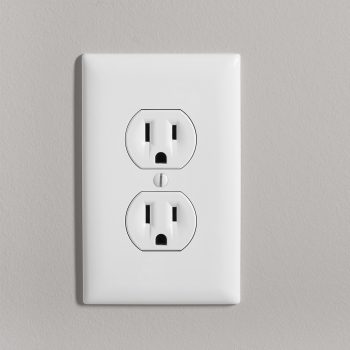i guess if someone’s putting up their lights backwards, then it makes sense that that person also thinks it’s less work to drive to the hardware store and buy a non-existent extension cord than it is to just redo the lights
If I ever buy one of these, I’d only ever use it to encase in resin and put on a shelf as a comedic ornament.
… but you don’t really care for logic do ya?
On the one hand, there are legitimate uses for double ended male cords. On the other, absolutely none of those legit uses invovle christmas lights
Okay but can we agree very very few uses besides generator hookup
generator hookup shouldn’t be one of those, as shouldn’t proper generator transfer switches have plugs designed so you don’t need a suicide cable?
I’ve used a suicide cord before in some rare instances. When I was finished I immediately took it apart.
You didn’t do it right…
I used to use one to get power into my popup camper…
Where was the power originally suppose to come in? They make power “Inlets” for that sort of thing. This one is designed with an Interconnect Switch for hooking into a system with Mains, but a camper with outlets should just have a inlet somewhere.
Fuck if I know… I bought the thing used from a buddy like 12 years ago and that was the cord he’d always used … Plugs into a regular outlet on the outside of the camper and then the outlets inside have power.
/me shrugs
I don’t know much about circuits but could you switch the polarity to make this work?
in AC, which is what home electricity uses, the polarity is constantly switching, from + , then - , then + , and so on, 50 or 60 times a second depending on where you live. This means that, unlike batteries, it’s symmetrical, and you can just splice the cables and attach two male plugs together and they will work regardless, even if you somehow attach the neutral to live and live to neutral, in fact in many countries you can actually buy just the plug without the cable and then you can assemble it yourself in whatever way you please.
of course tho, this should be done only if you have a decent understanding of electricity, and it should not be attempted by someone who lacks those competences, hence why hardware stores “gatekeep” male to male plugs. If you really need one and are sure you understand how they work, you can probably make one yourself.
(If you) are sure you understand how they work
And
If you really need one
I understand how power systems work. But, I can’t come up with a situation where I’d use a male-male AC cord rather than a safer and more reliable alternative. Most relevant is simply cutting off the female termination and reterminating through a breaker to the outlet ($15 and 15 min).
Picture this: It’s 8pm in early December. You’ve been hanging lights on your house since about 10 this morning, and it’s long after dark. As you’re laying the last section, you realize that you’ve got two female connectors next to each other. Do you tear it up and do it again, or do you hack a solution together so you can go inside and thaw?
The suburban solution is to create a false dichotomy to rationalize outsourcing a simple electrical issue to Lowes.
The hack solution is to cut two ends and reterminate them.
I’d hack it. To do it well it’s 8 crimps, wire loom, and harness tape. So, 10 minutes and $5.
and you’d be right. If you are sure about it, and you know how it works, just make it yourself, so that you don’t need to put anyone else in danger of getting sued.
The reason hardware stores don’t sell them is that people WILL use them in a dangerous way, and they don’t want to be held responsible.
Makes sense. I’d not sell a hack job. But, for a temporary thing that’s mine, sure.
Ah I see. You can tell I don’t know much about this lol. I figured it was like DC.
I know even less probably but I’m going to say yes and let you find out for me.
It’s not that it won’t work - polarity doesn’t quite work like that in AC systems - it’s that as soon as you plug in one end, the other end has a pair of exposed metal contacts with mains voltage between them. One mistake, touching the contacts or having them come into something metal (like the ladder you are using to hang the Christmas lights) and someone dies
Also, once you plug it in to your strand of lights, the other end of your lights will have a live male plug dangling off it.
Reversing polarity is a Starfleet-approved procedure in all situations.
My old boss had one, for when power went out, he could back feed from his car to the house. I never touched it.
Good thing you never touched it. What your boss did is possible and if he really understands what he is doing and is not connected to the grid then he can do it. But for any ordinary homeowner absolutely do not try this. You could burn your house down or even worse kill some poor lineman/electrician working on the problem somewhere else on the grid who isn’t expecting the equipment he’s working on to go live out of nowhere.
Exactly this. It’s so insanely selfish and pretty illegal.
That said, 120v backfeed is unlikely to kill and linemen kind of expect and test for residual current because of accidents like this causing falls, but it doesn’t mean it’s okay, and the chances of hurting someone are still non-zero.
But doesn’t the transformer convert the current back up? So it could be way more than 120v on a line that they’re expecting to be shut down. At least that’s my understanding of it.
But either way yeah, they probably check for it, but no you shouldn’t do it because you there’s a possibility that you could kill someone.
You’d have to be pumping up quite a bit I think to reverse through the residential transformer with just your little generac home unit, but you may be correct if there are no one way circuits or backfeed fuses. Even so, hopefully it wouldn’t kill. Home voltage stepped up would lose its amperage and be like an extremely anemic taser potentially.
I’d love to hear from an electrical worker on the topic, but yea, it’s the amps that kill more than the volts.
Spectaculair give me 14 of them right now
I’m sure someone would sell you one.
Tell me you’ve never used a generator without saying you’ve never used a generator.
Even with a generator, suicide cord is the WRONG way to do it.
Not like that’ll stop anyone anyways.
Are you actually insane? Never EVER backfeed a socket like that. Way more dangerous than the Christmas light loonies.
Tell me you’ve never heard of an Interconnect and put the lives of every power line worker in your area at risk every time there’s a blackout without telling me…
Tell me you’ve never heard of turning off the main breaker before switching to generator power without saying it.
Interconnects remove an element of human error and putting Lineman at risk
I’m not American, Christmas lights aren’t a thing here like they’re in the US, can someone explain?
Their lights usually have a plug on one end and a socket on the other. Ppl put them around the exterior of their hoses, then realise they did it the wrong way, and the socket end is near the outlet they wanted to plug them in.
Or they mounted two strands of lights, and where they meet up it’s either 2 plugs or two sockets accidentally.
A strand of christmas lights resembles an extension cord, but they tend to be made of smaller gauge wire and obviously have little sockets for tiny light bulbs spaced along them. They typically have 2-prong male plug on one end, often with a 2-prong female pass through on the back so you could plug more than one strand into the same receptacle, and they usually end in a female plug so they can be daisy chained.
Sometimes, when installing them on a house or something, the person installing them may not pay attention to which direction is which, and end up installing them so that the female-only end is near where they intended to plug them in. So instead of pulling them down, or running a long extension cord, they go to the hardware store looking for a male-to-male plug adapter.
Power plugs and sockets are gendered for a very good reason; the female receptacle keeps the energized contacts protected inside, and the male plug’s contacts should only be energized when plugged in and their outer shells protect them. A male-to-male cable when one end is plugged in and the other is free now has exposed mains current just waving around in the open air ready to kill someone. And, on a smaller note with christmas lights, they usually have a fuse built into the plug, and plugging them in backwards bypasses this for at least the first strand, so it’s technically 102.7% unsafe to do this.
The other thing a male-to-male adapter or cable is sometimes used for is to attach a portable generator to your home’s electrical system by just plugging it into an outlet, especially during a power failure. They do make what are essentially special male receptacles I think mainly for the RV industry for attaching generators like that, most houses won’t have these. Plugging it into a normal wall socket will actually work, but 1. you have bypassed the breaker panel, so the breakers no longer provide over-current protection. You could overheat the wires in the walls and burn down the house. 2. there’s a possibility that you’re feeding electricity to the entire house through the breaker box and even out to the transformer, which means the lines could be energized for linemen working on them. Throwing the main breaker might prevent that? They make switching gear designed for buildings with their own backup generators that can either manually or automatically sever their connection to the grid when on internal power, but again a doofus trying to make one of these cables probably doesn’t have one of those.
Outstanding, thank you for this
Wow. I had no idea. Thank you for educating me.
Strand of exterior lights, one end male plug one female. Idiots start to mount the lights with the female end near their outlet. Get done, become confused, go to store for male to male cord to plug into female end.
The female end is for chaining multiple strands, not for supplying power (directly) from the power socket.
Aaah, gotcha! Thank you!
Isnt having an open end really dangerous?
Every Christmas light string I have seen has had a small fuse inside of the plug, so even if you managed to get a female plug full of water or something and somehow manage to get shocked before a breaker trips in the outlet, you’re probably just going to blow the fuse.
Every Christmas light I’ve ever seen were all low voltage. The last Christmas light that was directly into main power instead of having a power convertor plug was decades ago. I guess that’s EU regulations at work.
You cam cover them with electric tape or put a cover on them. It’s nobmore dangerous than your home’s exterior outlets though.
Homes exterior outlets??? It might be europe but we dont have neither of those seemingly pretty dangerous things.
I’m going to assume you are English, since they seem to have extreme fear of electric shocks. But there is never any issue with exterior outlets. 99% of them have covers like this and are no nore dangerous that light switches on a patio or in your bathroom.
The places where i lived for longer times are hungary, sweden and ireland. Ireland has the same plug as the uk, and in hungary and sweden its the general eu plug. While the plug you linked does seem mostly safe, i think its a good thing that the uk takes electrical safety seriously. My main problem with the female plug is its a christmas tree that can catch on fire and i dont think an exposed wire near it is a good idea. If the cover is required in some way to complete the circuit then i have no problem with it. Thats good design but the sad thing is most of times they skip the good design part.
Thr cover doesn’t complete the circuit, it just prevents debris getting into the socket. An extension cord doesn’t have a cover on the female end and it is completely safe, just like an outlet in a bathroom or a surge protector.
Gfci outlets are pretty cool technology. They make getting electrocuted impossible as long they are installed correctly.
…in europe. From what i heard america doesnt really have them.
Considering they are required by code to have them anywhere there is water. America does have them.
The power can go through the female end just fine, that’s not the problem. The problem is people plug this “suicide cable” into the wall first, thus creating a 120v taser of sorts. Like someone else in this thread said, the only problem from cables like that is people tend to try to backfeed energy into the system with a generator or solar panels. Boom.
Also, at the end of the chain there is a male terminal exposed with live current. Could cause a fire I guess.
So is the problem solved by not plugging it into a powered wall plug? Just like… flick the switch off, like you would a light switch before changing a bulb?
Most American outlets aren’t switched. They can be but most aren’t. If you’re really paranoid you can throw the breaker at the panel.
Wait really? I don’t think I have a single unswitched plug in my house, and I’ve never seen another house with even a single unswitched plug. Do US people need to unplug cords to get rid of standby lights?

Behold the typical North American duplex power outlet. They typically do not have a built in switch. They might be controlled by a light switch, so you can throw a switch near the door and have the floor lamps turn on but most are always hot.

That’s Australia’s.
Because of the no switch, does US plugs spark a lot when getting plugged in?
The solution is pulling down your Christmas lights and hanging them back up the right way.
Yes, but if someone trips over the cord there is a 50% chance the wrong side comes unplugged and potentially kills them, hence why they don’t make these cords
Oh I call the cables I use to wire up my controllers “suicide cords” because it’s just the hot, neutral, and ground hanging out one end, waiting to touch me…
You gotta lick it after you plug it in so you know it’s working.
Teehee, it tingles!
But you dont really care about voltage, do ya?
It goes like this, on the the 25th, a minor shock? No, a mortal shift…
The baffled men are meeting now their maker.
Hallelujah, Hallelujah,
Hallelujah, Hallelujah!
You can also use them to test the voltage, similar to testing a 9v battery.
aaaaaahhhhhhhhhhh lic-














